First up on my list of gardens I wanted to see whilst on my Northern Wanderings was Lowther Castle. I had based where I would stay to be in easy reach of Lowther plus the other priority visit (more of which another day).
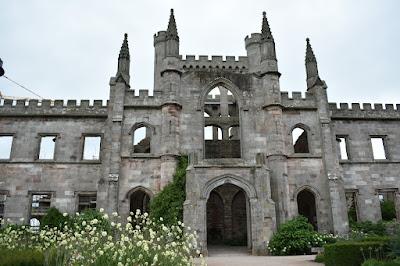
Lowther Castle is a fascinating place, the 'castle' looks like a castle should look. It has towers and crenalations, I am only slightly surprised it does not have a drawbridge. It looks like a castle should look as it was largely built between 1806 and 1814 on the site of a former hall by the 1st Earl of Lonsdale and therefore it was following a romantic ideal of what a castle is. It is an enormous building and must have been fiendishly expensive to build and maintain. The Earls of Lonsdale, I think it is fair to say, lived well and lived large. By the time they got to the 5th Earl of Lonsdale, who was also known as the 'Yellow Earl' due to his love of the colour yellow and his habit of wearing a yellow gardenia in his buttonhole every day, the money was running thin and his spending habits did nothing to help with this. By 1935 he had sold a couple of the family properties and decided to close Lowther Castle. It was used in WW2 for the war effort but the family could not afford to reopen the castle when it was returned to them. The National Trust were offered it but declined and in the mid 1950s the roof was removed, most of the internal stoneworks was demolished and it became effectively a large ruin. The Estate was then mainly used for farming and timber growing.
The ruins became managed by a chartiable trust in the 2000s and work began on restoring the gardens, removing the pig pens and chicken huts. In 2011 the Estate was made open to the public and by 2016 the family, who still owned the estate, began managing the Castle again.
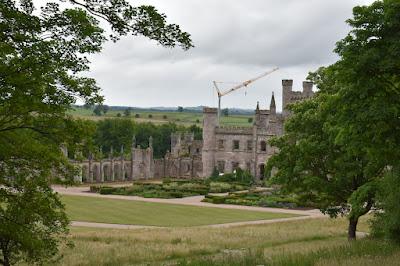
In mid-2019 Dan Pearson was engaged to oversee the redesign of the gardens and it was at this point I think I first heard about the Castle and added it to my 'must visit' list. I was going to visit in 2020, I planned a route and places to stay, but the pandemic hit so it had to go on hold. This year I decided to not put it off again, it was time to head north and Lowther was going to be the visit for day 1.
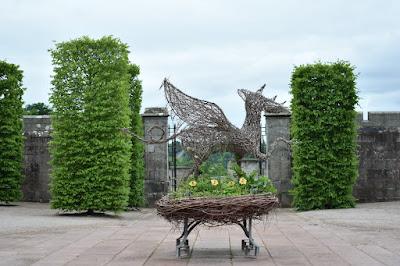
Gosh - just gosh. This is the most incredible of places.
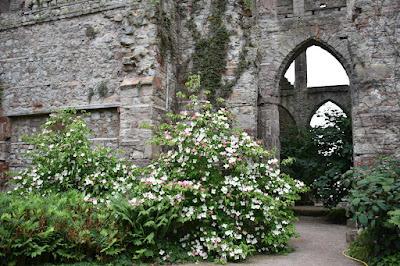
To call it a romanitic ruin is just not effusive enough. I have visited Dan Pearson gardens/plantings before but this is a masterclass of how buildings and planting scan be in harmony. It was a bit of mizzly rainy day when I visited which meant there were not a lot of visitors, so it made it feel a very special visit.

There were moments when I was feeling like Edward Burne-Jones would pop out from behind an easel and shout 'Arthurian legend' wagging his paintbrush around energetically. I am not aware he ever did this, but if he was to, it would be here I am sure. Look at this rose perfectly posed in this archway - perfection!
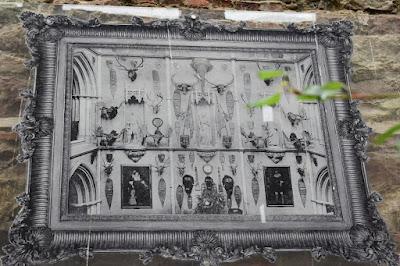
I liked that there are photographs carefully placed to show you what the space looked like before the demolition.
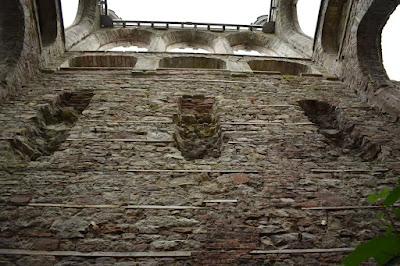
I could look up and fill in the gaps.
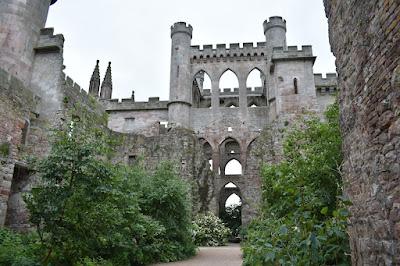
It it a place where you can let your imagination run wild.
Then it was time to explore further into the gardens.

I followed the route in the plan, seeing the remnants of formal walks and view points.
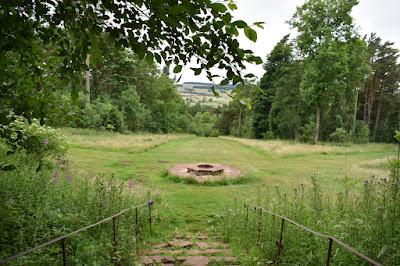
I wandered up the hill to the Patte D'Oie, which I have to admit I had no idea what this meant. I looked it up when I got home and it means 'goose foot', it is a design where three/five paths radiate from a central point looking a bit like the bones in a goose foot.

Then I looped down some seriously uneven steps (there is a warning to tell you they can be slippy), past the woods to the Western Terrace. Here the warning says there is a steep drop. I cannot tell you how steep it was because my vertigo went into overdrive and I just could not get close to the edge to look down. It was, however, the most magnificent view.
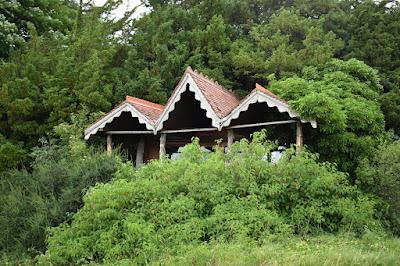
This summer house looks out over the view, of course it does, with a view like that you would want somewhere to sit and enjoy it.
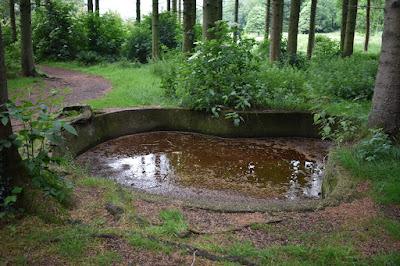
Then I went to find the Iris Garden. Now this took me a little while to find, partly because I was not totally sure what I was looking for. Suddenly I came across these kidney shaped beds that matched the shapes on the plan. They looked a bit like outdoor baths and I paused and through how much I would have liked to seen them when full of irises.
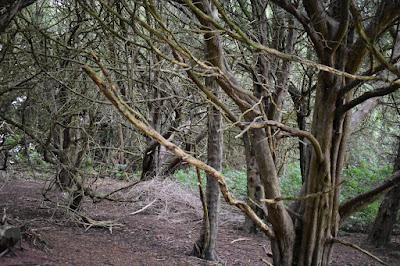
There is much to see when wandering the outer gardens.
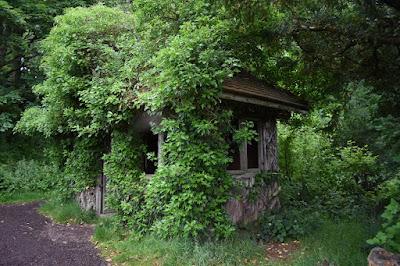
There are half-hidden structures to find,

and bits and bobs that you look at and wonder what was it fron, what did it look like when in situ.
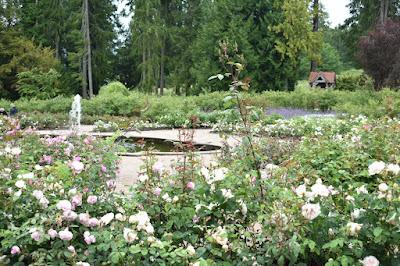
Then I wandered into the Rose Garden, which has a mere 2,255 or so roses planted in it all from David Austin. There are planting plans around the Rose Garden telling you which roses there are and explaining the story behind the planting. It is quite a sight.
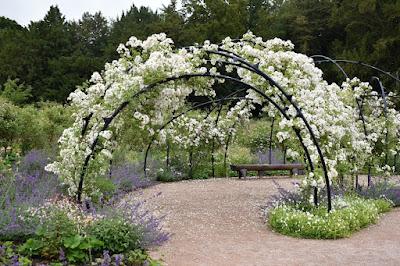
I loved the roses arches - they were full of scent.
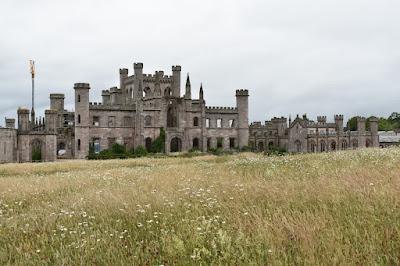
There are wildflower meadows flanking the formal south lawn.
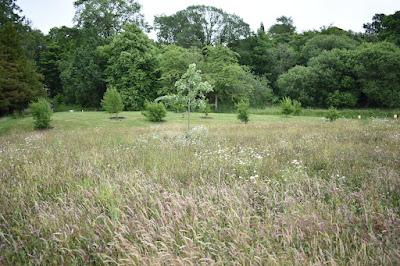
The meadows blend in with the more formal planting well.

I went around to the front of the castle, where there is an impressive low wall with this wonderful gateway.
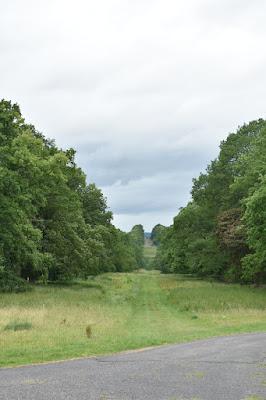
I stood and looked down the impressive avenue that I assume was once the main drive into the house. Can you imagine being driven along in a horse drawn carriage or maybe a 1920s Bugatti.....
Back I went into the ruin and gardens, this visit was not one I was rushing.
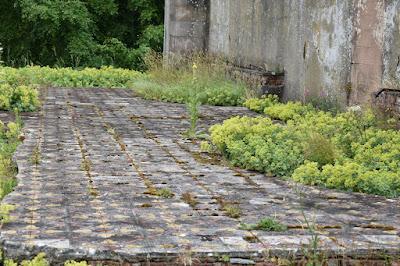
and looked at the remains of the orangery, where the Yellow Duke's gardeniers would have been grown.
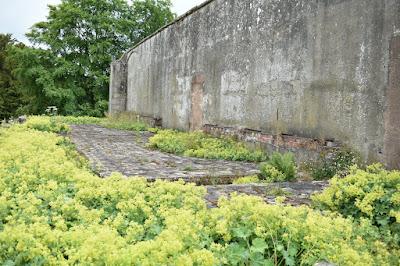
Doesnt't the Ladies Mantle (Alchemilla mollis) look wonderful? A plant I am not that keen on and yet.....
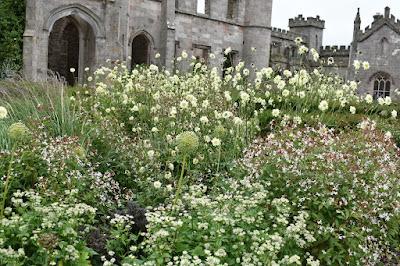
The planting in and around the ruins is superb. You walk through different moods of planting: from the bright and airy...
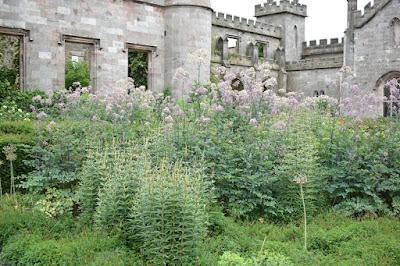
to the darker, moody plantings
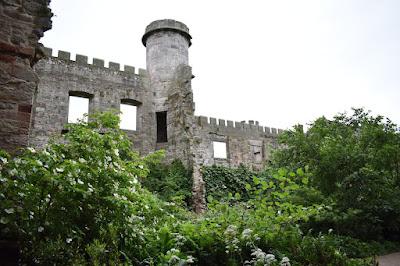
The planting fits with the walls, I cannot say it any better than that - the plantings fit, they look right, they look like they have grown there with no aid from anyone at all which of course, is the sign of incredibly clever planting.
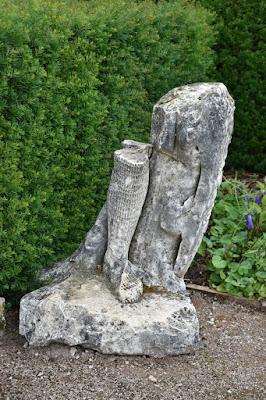
As you wander around there are lumps of wall and odd bits placed in the gardens. When I reached this leg I had a definite Edmund Blackadder moment (series 2 Elizabethan Blackadder) and for the next few moments I was muttering things like 'your majesty, I would like to present to you this handsome leg'.
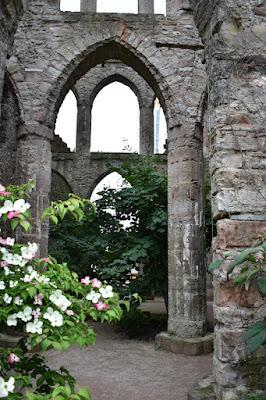
Back in the real world, the plant that stole the day for me was this Cornus, stunning or what!
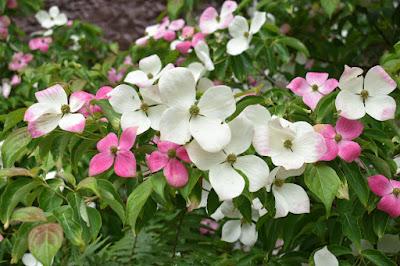
and good grief Mr Pearson, you must be very proud of the work you have done here because it is gobsmacking.
I returned to where I was staying very happy. I drank tea and starting planning the next day as this was the most plannless day with no fixed plan at that point.
Northern Wanderings 1 - Rufford Old Hall
